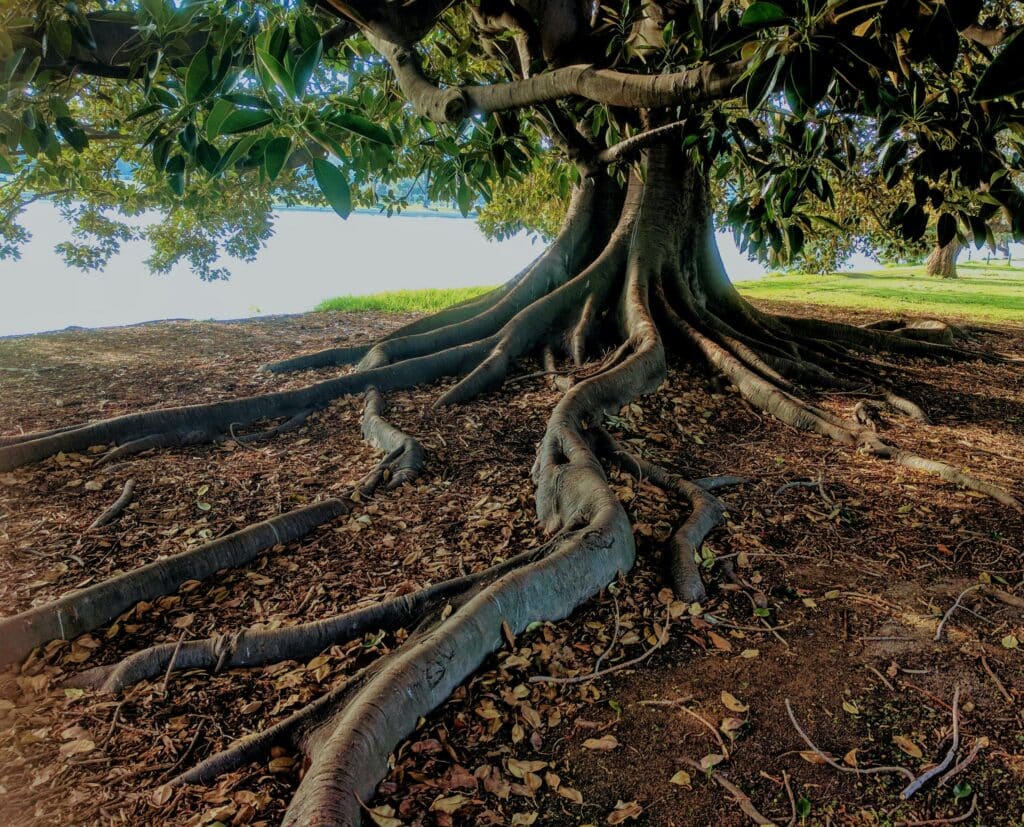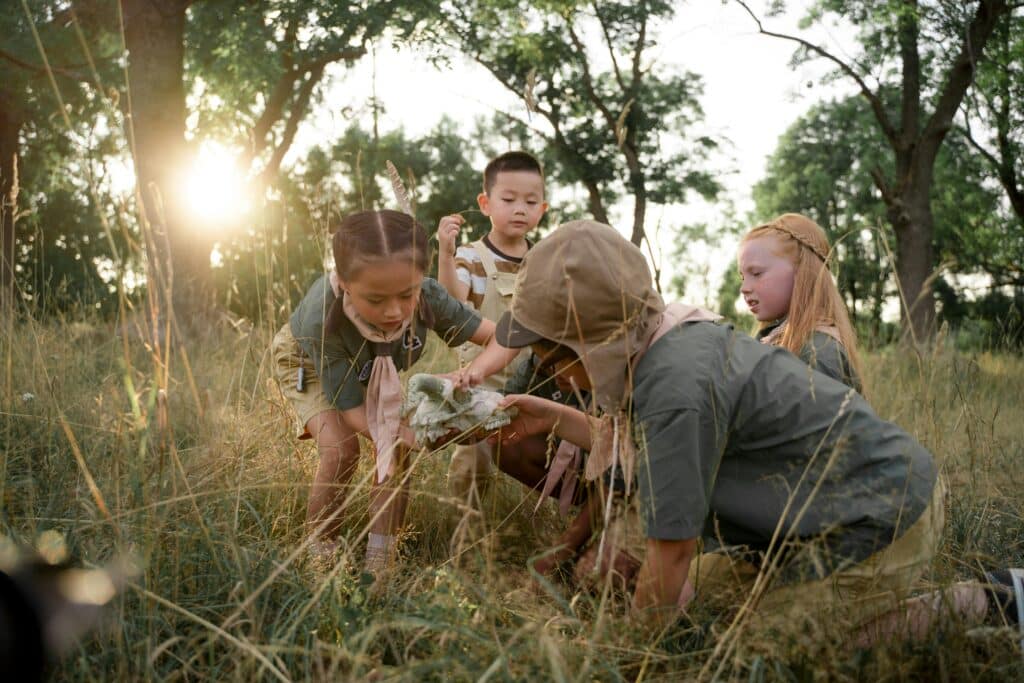The Roots of a Revolution in Learning

It’s early morning in a misty Oregon forest. A group of first graders, clad in rain boots and bright ponchos, crouch beside a fallen log. Their teacher isn’t holding a whiteboard marker—she’s holding a magnifying glass. The children are counting beetles, measuring moss, and sketching leaves. This isn’t recess—it’s school.
Welcome to the “Forest Classroom” movement, an educational trend redefining what learning can look like in the twenty-first century. Far from a fad, this model—where students learn core subjects outdoors in natural settings—has captured the attention of researchers, policymakers, and innovative educators alike. Advocates claim it could reshape the future of education by reconnecting students with curiosity, collaboration, and the environment itself.
For many teachers, the classroom walls have begun to feel like limits rather than boundaries. With rising student stress and dwindling engagement, educators are exploring alternative models that address emotional, cognitive, and environmental needs simultaneously. Outdoor-based learning, also known as nature-based education, is proving to do just that.
A growing body of research supports its benefits. According to the Children & Nature Network, students who participate in outdoor learning programs show up to a 27% increase in focus and 20% improvement in standardized test performance. Moreover, studies from Stanford University reveal that time spent in nature enhances intrinsic motivation and reduces anxiety symptoms among school-aged children.
Why Teachers Are Turning to Forest Classrooms
| Factor | Traditional Classroom Challenge | Forest Classroom Solution |
|---|---|---|
| Student engagement | Static lessons and screen fatigue | Active, sensory learning in real-world contexts |
| Emotional well-being | High stress, limited playtime | Mindfulness through nature exposure |
| Environmental literacy | Textbook-based sustainability units | Direct interaction with ecosystems |
| Teacher innovation | Rigid curriculums | Freedom to design adaptive, inquiry-based lessons |
The future of education may not lie in more technology, but in balancing it with the oldest teacher of all—nature. Forest classrooms invite students to think critically, collaborate meaningfully, and build resilience by solving problems in dynamic environments.
At ScholarlySphere, we explore emerging models like these that challenge conventional schooling and push education toward a future where innovation, empathy, and ecological awareness coexist.
But as this movement grows, one question lingers: can traditional schools adapt before the forest becomes the new frontier for learning?
The Science and Global Rise of Forest Classrooms

For decades, education reform has focused on technology: tablets, coding, and digital fluency. But as anxiety, attention deficits, and academic burnout rise among students, a new model of learning is quietly taking root—outside.
The Forest Classroom isn’t about abandoning progress; it’s about rebalancing it. Around the world, educators are discovering that time spent learning in nature is not only healthy—it’s scientifically superior for long-term engagement and cognitive growth.
The Science of Learning in Nature
Research across Europe and North America shows that natural environments enhance memory, creativity, and executive function. A University of Chicago study found that students who learned in outdoor settings retained 22% more information than those who learned indoors. Similarly, the American Institutes for Research observed that children in outdoor programs performed 27% better in problem-solving assessments.
Cognitive scientists believe that nature restores attention by providing what’s called “soft fascination”—a state where the brain can focus gently without overstimulation. Unlike screens and fluorescent lights, natural spaces calm the nervous system while engaging multiple senses.
Key neurological benefits include:
- Reduced stress hormones: Cortisol levels drop significantly after 20 minutes outdoors (Harvard Health Education Report).
- Improved working memory: Nature exposure enhances spatial and analytical processing.
- Greater empathy and social awareness: Students in green learning environments report stronger community bonds.
How Forest Classrooms Support Teachers
For teachers, the forest model provides autonomy and inspiration that rigid curriculums often stifle. A National Education Association survey found that 68% of teachers who adopted outdoor learning methods reported higher job satisfactionand lower burnout.
Educator advantages include:
- Flexible lesson planning and creativity.
- Opportunities for interdisciplinary teaching (combining science, art, and literacy).
- Improved classroom management through hands-on engagement.
- Stronger relationships with students outside traditional roles.
In many cases, outdoor teaching isn’t just effective—it’s rejuvenating for teachers as professionals.
Comparative Impacts of Learning Environments
| Category | Traditional Classroom | Forest Classroom |
|---|---|---|
| Student Focus | High screen exposure; fatigue common | Sensory engagement enhances attention |
| Social Skills | Competitive individual tasks | Cooperative, group-based learning |
| Emotional Health | Anxiety and burnout prevalent | Calming effects of nature lower stress |
| Creativity | Structured and limited | Open-ended, curiosity-driven exploration |
| Teacher Freedom | Rigid curricula | High flexibility and innovation |
Real-World Success Stories
Countries like Finland, Germany, and Japan have already incorporated forest-based education into national frameworks. In Finland’s “Metsäkoulu” (Forest School) model, students spend up to 30% of their week outdoors, showing consistent gains in literacy and science scores. In Japan, “Satoyama Learning” programs blend ecology with cultural studies, linking sustainability and civic responsibility.
Examples of Global Forest Education Models
| Country | Program Name | Key Outcomes |
|---|---|---|
| Finland | Metsäkoulu | Improved literacy, cooperation, and focus |
| Denmark | Udeskole | 80% teacher satisfaction; enhanced motivation |
| Japan | Satoyama Learning | Integration of ecology and cultural identity |
| U.S. | Nature Connect Schools | 15% rise in STEM engagement among K–5 students |
| Canada | Forest School Canada | Noted drop in behavioral referrals and absences |
Why This Trend Matters for the Future of Education
The rise of the Forest Classroom aligns with global concerns about climate, health, and the digital divide. As the World Economic Forum predicts, half of all job skills will change by 2030, emphasizing adaptability and critical thinking over rote memorization. Outdoor-based learning develops precisely those attributes—creativity, resilience, and collaboration.
Reasons Why Forest Classrooms Are the Future:
- They teach systems thinking, preparing students for complex, real-world problems.
- They embed sustainability and environmental literacy into daily education.
- They enhance equity, giving low-income communities access to enriching, low-cost experiences.
- They nurture digital balance, reminding students that intelligence extends beyond screens.
- They inspire innovation by connecting science and art through lived experience.
Challenges and Misconceptions
Despite growing enthusiasm, implementing forest classrooms presents hurdles. Critics question logistics, safety, and academic rigor. But evidence shows that the challenges are manageable and the benefits long-lasting.
Common Concerns vs. Reality:
- “Outdoor learning lacks structure.”
→ Modern forest programs follow accredited curriculums aligned with national standards. - “It’s unsafe or weather-dependent.”
→ Schools adapt with safety protocols, shelters, and proper gear, even in harsh climates. - “It’s only for early childhood.”
→ Universities in Sweden and the U.S. now use outdoor labs for environmental science, architecture, and engineering.
Teachers report that once students adapt to learning outdoors, academic performance stabilizes or even improves beyond traditional expectations.
The Bigger Picture
Education is not just about knowledge—it’s about belonging. The forest classroom helps students feel connected: to their peers, to their teachers, and to the world they inhabit. In an era defined by digital isolation and climate anxiety, this connection might be the most essential learning outcome of all.
By weaving nature into the fabric of learning, schools can cultivate the next generation of innovators who understand that technology and the environment are not opposites, but partners in progress.
And as the data increasingly shows, the future of education might not be about escaping nature—but returning to it.
From Classrooms to Ecosystems — The Path Forward

The future of education may not be found in a new app or a virtual headset, but in a patch of grass, a gust of wind, or the crunch of leaves underfoot. As the forest classroom movement grows, it challenges the core assumption of modern schooling—that learning must happen indoors, between four walls, and beneath fluorescent light.
If anything, this shift signals that education is returning to its roots—literally. Ancient philosophers like Aristotle taught in open-air academies; early Indigenous education systems thrived in constant dialogue with nature. The forest classroom is not an escape from modernity—it’s a reconnection with something deeply human: learning through experience and observation.
A Growing Movement Backed by Data
Across dozens of pilot programs and longitudinal studies, outdoor learning has consistently shown outcomes that go beyond test scores. Students in these programs demonstrate:
- Higher emotional intelligence and empathy toward peers.
- Improved concentration and academic confidence.
- Increased engagement in environmental science and sustainability projects.
- Better attendance and fewer behavioral incidents.
Teachers who participate report feeling renewed, not drained. Schools that implement outdoor learning models find stronger community engagement and parent involvement. These are not minor statistics—they’re signs of a paradigm shift.
Why This Matters Now
Education is evolving faster than ever. Artificial intelligence, automation, and climate change are redefining what young people must learn to thrive. The future of education will require flexibility, creativity, and environmental awareness—all traits cultivated naturally in outdoor classrooms.
| 21st-Century Skill | Traditional School Focus | Forest Classroom Focus |
|---|---|---|
| Critical Thinking | Test-based reasoning | Experiential problem-solving |
| Collaboration | Group projects | Real-world teamwork in nature |
| Environmental Literacy | Textbook definitions | Direct ecological understanding |
| Mental Health | Counseling after burnout | Prevention through nature connection |
These shifts matter because they redefine success—not as memorization, but as adaptability and empathy.
At ScholarlySphere, we explore these emerging ideas, highlighting how innovations like forest classrooms point toward a more balanced, human-centered educational future. Our goal is to help educators see what lies ahead, not just within the syllabus, but beyond it—where learning meets life.
As teachers rethink their role in shaping this next chapter, the question becomes not whether outdoor learning works, but whether traditional schooling can afford to ignore what the forest is already teaching us.
So if the classroom of tomorrow is a living, breathing ecosystem—are we ready to step outside and join it?
Works cited
Outdoor learning in early childhood education: exploring benefits
https://www.tandfonline.com/doi/full/10.1080/00131881.2023.2285762
Supporting children’s wellbeing through outdoor time: opportunities and challenges
https://pmc.ncbi.nlm.nih.gov/articles/PMC11652364/
Getting Out of the Classroom and Into Nature: A Systematic Review
https://pmc.ncbi.nlm.nih.gov/articles/PMC9149177/
Outdoor Education – Research Summary (UW-Stevens Point)
https://www.uwsp.edu/wp-content/uploads/2023/11/leaf-school-grounds-research.pdf
Forest Classroom: A Case Study of Educational Augmented Reality Design
https://www.mdpi.com/2414-4088/7/5/46
What is Forest School? (Forest School Association)
https://forestschoolassociation.org/what-is-forest-school/
The impact of an outdoor classroom on children’s well-being
https://research.childrenandnature.org/research/outdoor-classrooms-can-be-used-for-increasing-nature-contact-and-promoting-student-well-being/
Forest School participation is beneficial for children’s mood and cooperation
https://research.childrenandnature.org/research/forest-school-participation-is-beneficial-for-childrens-mood-and-cooperation/
Outdoor learning spaces: The case of forest school (NAAEE / eePRO)
https://eepro.naaee.org/research/eeresearch/outdoor-learning-spaces-case-forest-school
Outdoor learning: Exploring the evidence-base (Chartered College of Teaching)
https://my.chartered.college/research-hub/outdoor-learning-exploring-the-evidence-base/
Promoting Social and Emotional Development Through Outdoor Learning
https://pmc.ncbi.nlm.nih.gov/articles/PMC9579527/
Psychological benefits of a biodiversity-focussed outdoor learning program
https://doi.org/10.1016/j.jenvp.2019.101381
Teaching Physics in the Woods
https://arxiv.org/abs/2306.02654
School Forests Connect Children to Nature (Project Learning Tree)
https://www.plt.org/educator-tips/school-forests-connect-children-to-nature/
The evidence for outdoor learning and play (Muddy Hands / Outdoor Classroom Day)
https://outdoorclassroomday.com/resource/muddy-hands-report/
Forest Schools: Inside Nature’s Classroom (Assembly Research Matters)
https://www.assemblyresearchmatters.org/2024/11/25/forest-schools-inside-natures-classroom/
Investigating outdoor learning experiences of social studies teacher candidates
https://www.sciencedirect.com/science/article/pii/S0742051X24004098
The importance of outdoor education and nature for learning and child development
https://www.outdoorplaycanada.ca/2023/07/24/the-conversation-outdoor-education-has-psychological-cognitive-and-physical-health-benefits-for-children/
Empirical Evidence Supporting Benefits of Outdoor School and Experiential Learning
https://grayff.org/wp-content/uploads/2013/10/Empirical-Evidence-Supporting-Benefits-of-Outdoor-School-and-Experiential-Learning-Programs_March-2015.pdf
Forest school (learning style) — Wikipedia overview
https://en.wikipedia.org/wiki/Forest_school_(learning_style)


